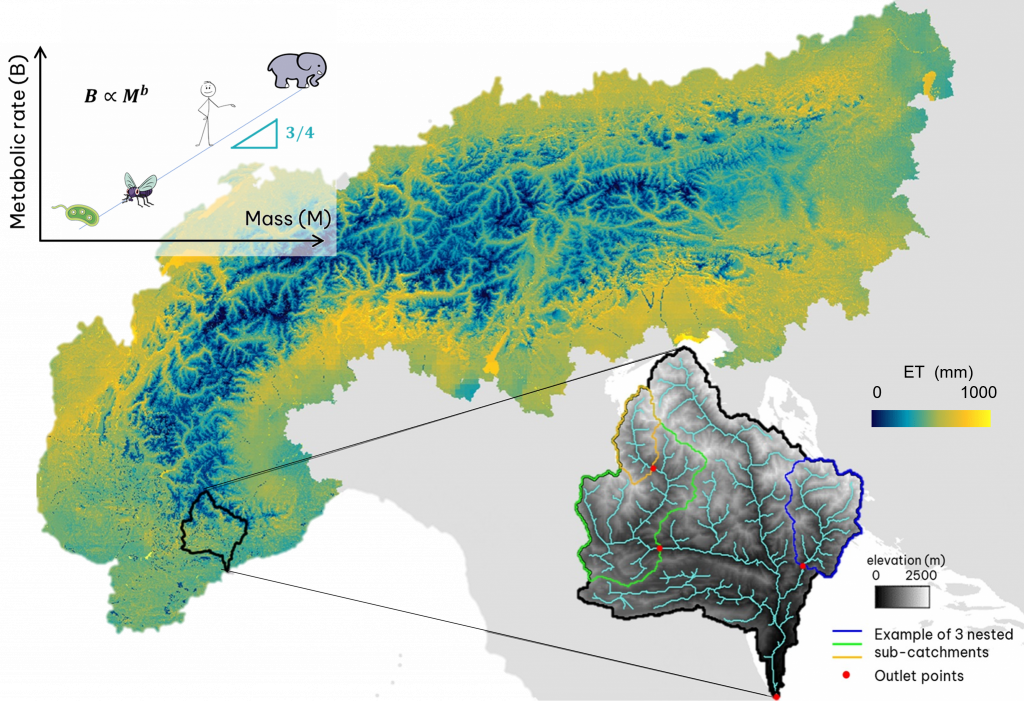
Modeled annual evapotranspiration (data from Mastrotheodoros et al., 2020) over the Alpine arch.
Image credit: F. Bassani, CHANGE.
Allometric scaling relations are widely used to address biological processes in nature. They are typically expressed as power laws, postulating that the metabolic rate of an organism scales as its mass to the power of an allometric exponent, which ranges between 2/3 and 3/4.
Several studies have shown that such scaling laws hold also for natural ecosystems, including individual trees and forests, riverine metabolism, and river network organization. Here, we focus on allometric relations of catchment metabolism, defined as the set of ecohydrological and biogeochemical processes through which the catchment maintains its structure and reacts to the environment.
Supported by theoretical considerations, hyper-resolution ecohydrological simulations covering the whole European Alps, and remote sensing data, we look for allometric scaling relationships linking water and carbon dynamics (e.g., transpiration, gross primary productivity, carbon use efficiency) to topographic catchment properties (e.g., contributing area), respectively acting as proxies for the catchment metabolic rate and mass.
Extension of this work to account for riverine metabolism and biogeochemical fluxes affecting below-ground soil dynamics will lay the groundwork for the derivation of a metabolic theory of catchments.
People | Francesca Bassani